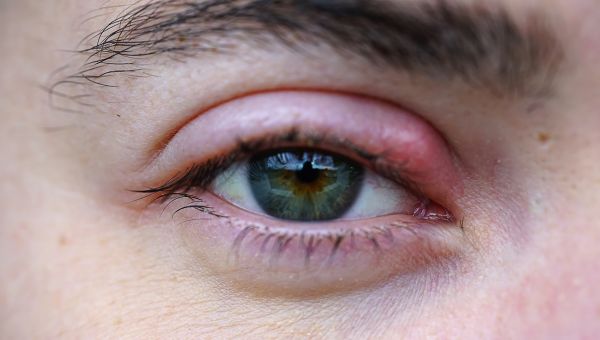7 ways high blood sugar levels affect your body
These type 2 diabetes symptoms—from numb feet to painful blisters to sex problems—can occur when blood sugar is not well-managed.
Updated on March 26, 2024

If you have diabetes and are working to manage the condition, it helps to understand how the disease works.
Everyone needs a certain amount of sugar in their blood. When we eat and digest our food, carbohydrates from food and drink are broken down into glucose. This is a type of sugar that travels in the bloodstream to supply our body’s cells with energy. Insulin is a hormone produced in an organ called the pancreas. This hormone helps glucose get into your cells to be used for energy.
But when you develop a condition called insulin resistance, it becomes harder for glucose to get into your cells. The body responds by producing more insulin, which helps, but only for awhile. Eventually, if insulin resistance continues to worsen or the pancreas can’t produce enough insulin, blood sugar levels increase, which is the main feature of diabetes.
In order to get blood sugar to healthy levels, you migth be advised to make lifestyle changes such as eating a healthy diet rich in fruits, vegetables, lean protein and whole grains and low in salt, added sugars and saturated fat (which is solid at roo temperature, like butter), as well as getting regular exercise as your are able. Managing your weight is also important, because being overweight is one of the main causes of insulin resistance. Tracking your blood sugar regularly will also help you take control of your levels. Medication or insulin may also be needed to control blood sugar levels. Over time, poor or uncontrolled blood sugar can cause damage to nerves and blood vessels, increasing the risk for a range of health problems.

Tracking your blood sugar can help your manage diabetes
If you are taking insulin, trying to control your blood sugar levels, or have been diagnosed with gestational diabetes (high blood sugar levels during pregnancy), one way to manage your levels—and reduce your risk of health problems—is to track your blood sugar on a regular basis. There are many over-the-counter test strip kits, meters and devices available for testing your blood sugar at home.
By monitoring your blood sugar levels, you’ll also have a record of your progress to discuss with your healthcare provider at each appointment. Use Sharecare to record your results, so you don’t have to remember your levels from day to day. You can download Sharecare for your iPhone and for Android.
Here’s how to check your levels using test strips:
- Wash your hands.
- Insert a test strip in your meter.
- Get a sample of blood using your lancing (finger prick) device.
- Hold your test strip into the sample of blood and wait.

Loss of sensation
Nerve damage (called diabetic neuropathy), especially in the feet and legs, is a complication that may result from diabetes. Symptoms include unsteadiness when you stand or walk, as well as numbness that can limit your ability to feel hot, cold, and pain. Along with reduced sensation when you walk, numbness can lead to a foot injury—such as a blister or cut—that may go unnoticed. Such injuries could lead to infection if they remain untreated.
Instead of loss of sensation, some people with diabetic neuropathy may feel tingly sensations, or you may experience shooting pain.

Boils and styes
People with type 2 diabetes are more susceptible to bacterial infections, including boils (a bump under the skin that is filled with pus), styes (painful red bump on the eyelid), and infections of the hair follicles and skin around the nails. Skin problems are often an early indication of type 2 diabetes. If caught early enough, however, these issues can be treated and even prevented.

Itchiness
Diabetes can cause excessively dry skin that feels itchy. To avoid or control the itchiness, use gentle soap and shampoo, don’t bathe with overly hot water or for extended periods of time, and apply cream to soothe your skin. It’s also important to avoid scratching the itch. Scratching can cause cuts in the skin, and increase the risk for infection.

Poor circulation
Type 2 diabetes can lead to a narrowing and hardening of blood vessels in the feet and legs, causing poor blood flow. If your feet are cold, wear socks. Don’t use hot water or a heating pad to warm your feet if they’re numb because doing so may lead to burns. Poor circulation can also cause your skin to itch in the lower parts of your legs.

Sex Problems
Damaged nerves can affect the sex organs and sexual response. Erectile dysfunction (difficulty having erections) may result when the flow of blood to the penis is disrupted and/or the nerves are damaged. High blood pressure, high cholesterol, and obesity, may also contribute to sexual issues.
Nerve damage may also lead to vaginal dryness, making intercourse painful, and a loss of sensation in the vaginal area, which can interfere with the ability to achieve orgasm.

Fungal infections
People with type 2 diabetes are susceptible to fungal infections caused by Candida albicans, a common type of yeast infection. Symptoms typically include red rashes that occur in moist skin folds, which are often surrounded by blisters and scales. The armpits, groin, between fingers and toes, and corners of the mouth are common areas for this infection.

Gastroparesis
The vagus nerve is responsible for moving food through the digestive tract. When this nerve is damaged or not working, the digestive process slows or stops—a disorder called gastroparesis. This disorder can cause food to stay in the stomach and delay it from moving into the intestines for further digestion, which can cause blood sugar levels to become unstable and make diabetes more difficult to manage.
National Institute of Diabetes and Digestive and Kidney Diseases. Insulin Resistance & Prediabetes. Last Reviewed May 2018.
American Diabetes Association. Life doesn’t end with type 2 diabetes, Skin Complications, Peripheral Neuropathy, Foot Complications, Complications.
Joslin Diabetes. Diabetes Learning Center.
Mayo Clinic. Diabetic Neuropathy. March 3, 2020.
Centers for Disease Control and Prevention. Candidiasis. Page last reviewed: October 30, 2020.
J Casqueiro, J Casqueiro, & C Alves. Infections in patients with diabetes mellitus: A review of pathogenesis. Indian journal of endocrinology and metabolism. 16 Suppl 1(Suppl1), S27–S36. 2012.
More On


video

article

slideshow


video


video
